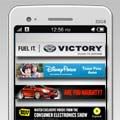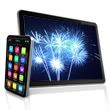Publishers often ask us “what is the real benefit of rich media mobile advertising?” Some people aren’t clear exactly what it is, so we thought we would give you the rundown. It is important for you to know about rich media so you make an informed decision when choosing which multimedia features to include in your mobile advertising campaigns. We think it is vital to get on board the rich media bandwagon.
Rich media allows multimedia applications to be encapsulated in different virtual mobile contexts, including mobile Web browsing or mobile applications. It offers multimedia experiences to users that go beyond simply displaying text, static pictures and animations or video. It allows users to enter media elements, for example, ad banners by extending them across the page, creating a larger surface area for the display of information and interaction.
And, what are the benefits? Rich media advertising offers the advantage of creating an exciting user experience and the ability to convey information to the user more effectively than conventional display advertising. A format characterized by the use of sophisticated graphics, animation or streamlining video provides an immersive user experience, enabling advertisers to effectively reach consumers and inspire interaction with the brand. One of the other major selling points for rich media units is that they allow users to interact with the ad without having to leave the app, rather than clicking through to a mobile browser.
Agencies and publishers love the attractive and eye-catching features of the rich media advertisements, and this has shown to result in higher interaction and conversion rates than standard mobile banners, facilitating user interaction and brand engagement.
Research now shows that some major US retailers have experienced massive increases in click-through rates when switching to rich media mobile advertising – take for example, a 357% jump seen by a popular luxury auto manufacturer, a 455% increase for a quick service restaurant and a 214% upswing seen by an athletics manufacturer. The statistics are convincing!
Other benefits for consumer user data that have been identified include:
• Features like expandable banners are effective in collecting consumer responses.
• Consumers have the flexibility to switch between rich media and the core content.
• Customer engagement can be measured at all times regardless of exposure or interaction.
• It can also help publishers gain insight into user behavior.
The huge rising in the popularity of the tablet represents an even bigger opportunity for rich media because of the larger screens and ability to interact more easily with ads. Have a chat to one of the experts at Mocean Mobile who are helping some of the biggest content producers all over the world maximize revenue through mobile.


